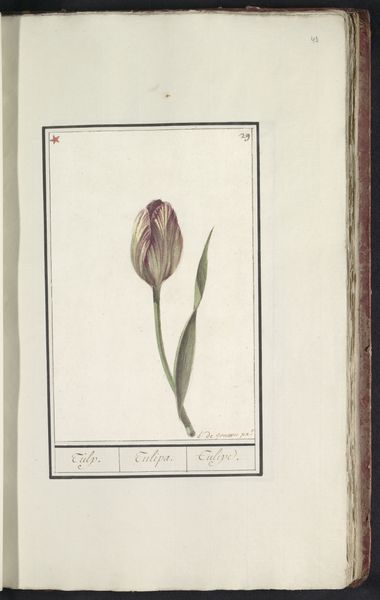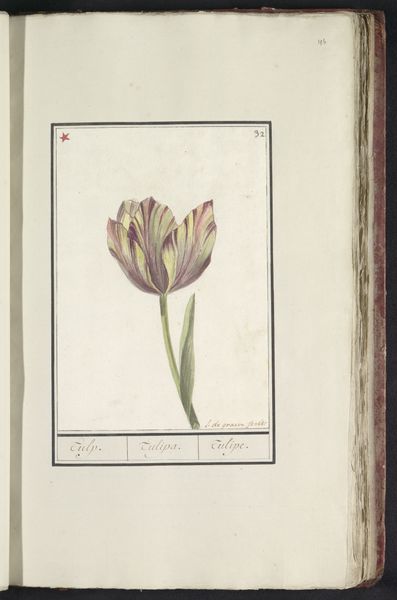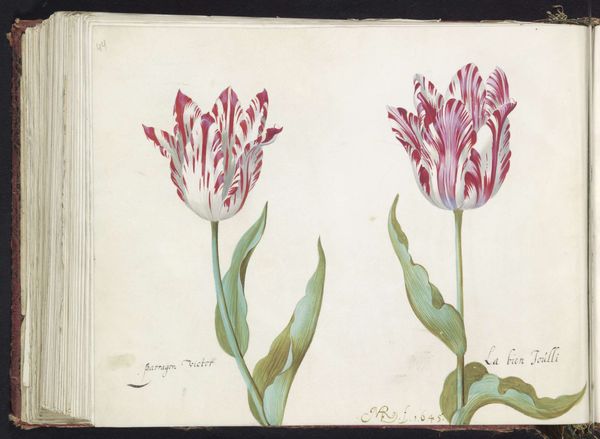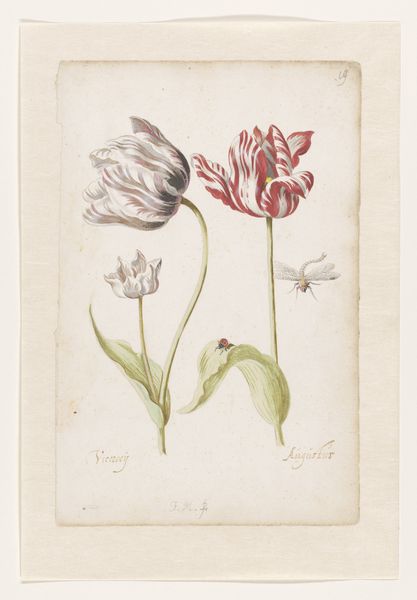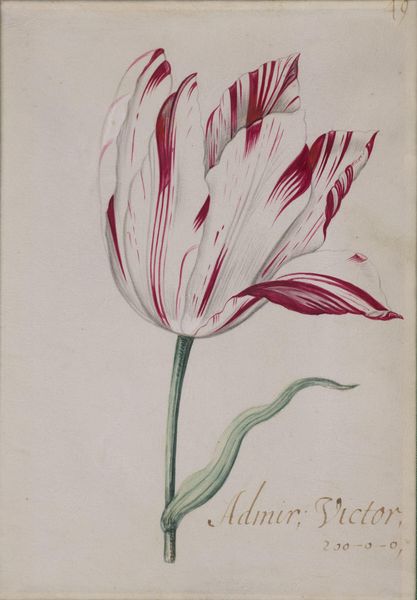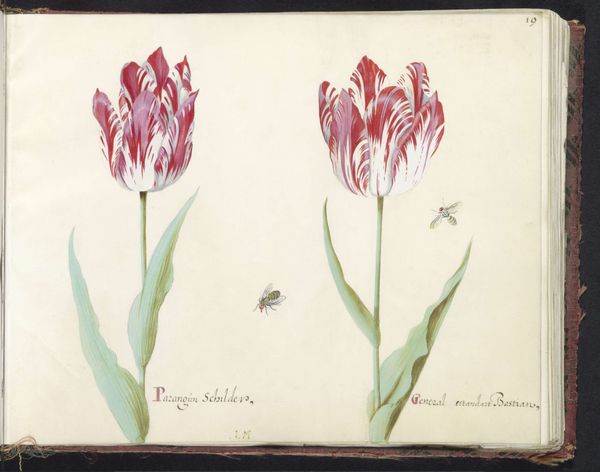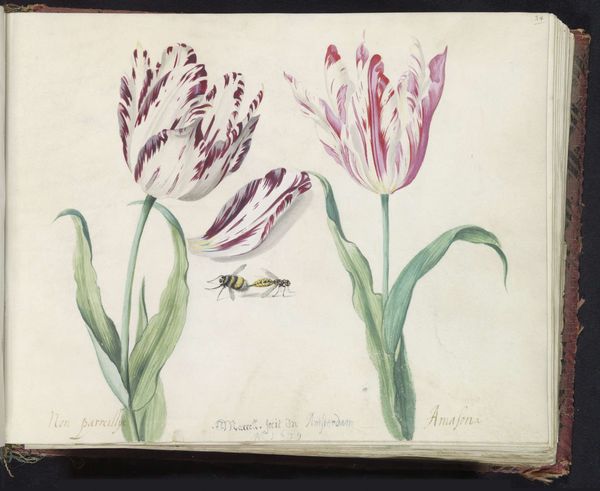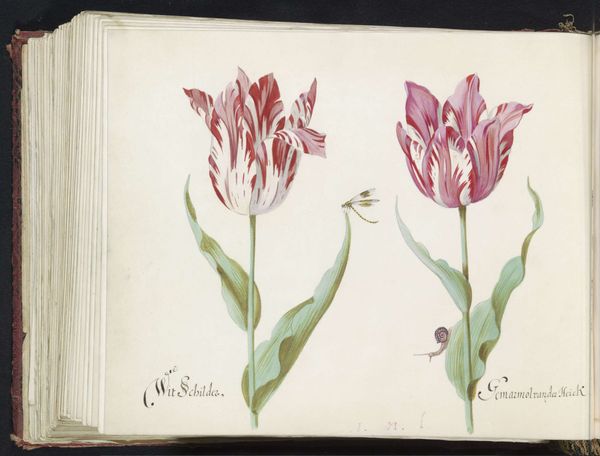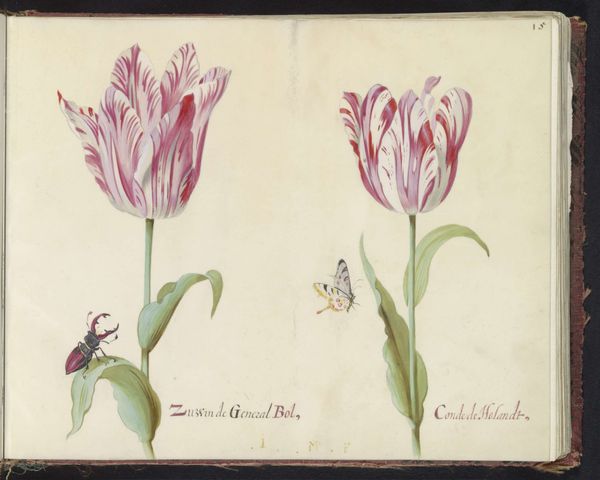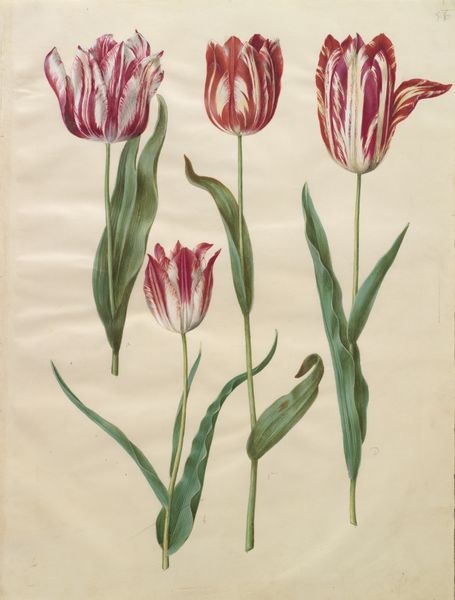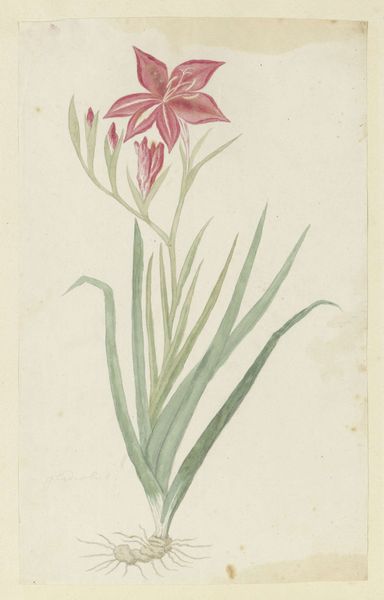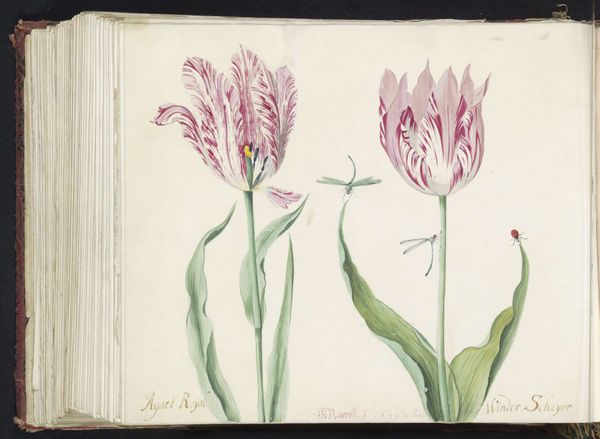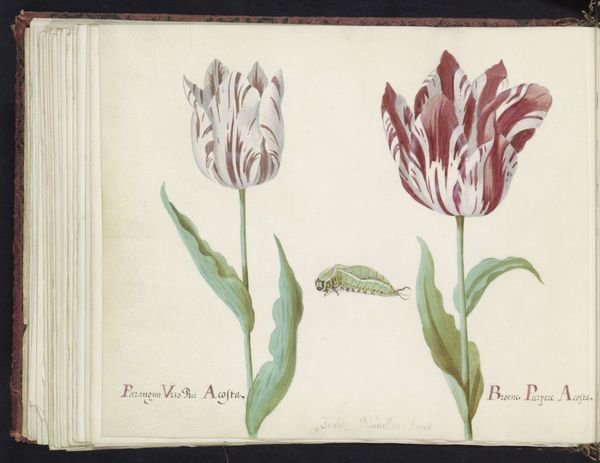
drawing, paper, watercolor, pencil
#
drawing
#
water colours
#
paper
#
watercolor
#
coloured pencil
#
romanticism
#
pencil
#
watercolour illustration
#
genre-painting
#
academic-art
#
watercolor
Dimensions: height 258 mm, width 160 mm
Copyright: Rijks Museum: Open Domain
Editor: This is "Tulp (Tulipa)" created in the 1790s by Jan Anton Garemyn. It's a delicate watercolor and pencil drawing on paper. The flower's poised almost elegantly; the thin stem and long, singular leaf create a sense of upward motion, drawing the eye to the intricately patterned petals. How might we interpret this emphasis on line and form? Curator: Observe the precise rendering of the tulip's form. The artist meticulously captures the interplay of light and shadow, defining volume through subtle gradations of tone. Note the crispness of the outline, the delicate veining on the petals, and the subtle texture achieved through controlled application of pigment. Consider the relationship between the positive and negative space: How does the placement of the flower within the rectangular frame influence our perception of its form? Editor: The empty space really makes the flower stand out. But what about the colors, or lack thereof? Was that common in botanical illustrations of this time? Curator: The restrained palette, primarily utilizing muted greens, reds, and whites, serves to emphasize the purity of form and the delicate nuances of light. By minimizing the use of strong color, Garemyn directs the viewer's attention to the underlying structure of the tulip. The chromatic restraint invites a formalist reading that prioritizes line, shape, and tonal gradation over purely decorative elements. Do you agree with the impact of such self-imposed restraint? Editor: Yes, absolutely. Concentrating on form gives it a timelessness. It's like it’s trying to show the perfect essence of a tulip. I appreciate learning how such limitation can reveal fundamental structural qualities. Curator: Precisely. Recognizing such artistic choices expands our awareness of the artistic intentionality.
Comments
No comments
Be the first to comment and join the conversation on the ultimate creative platform.
